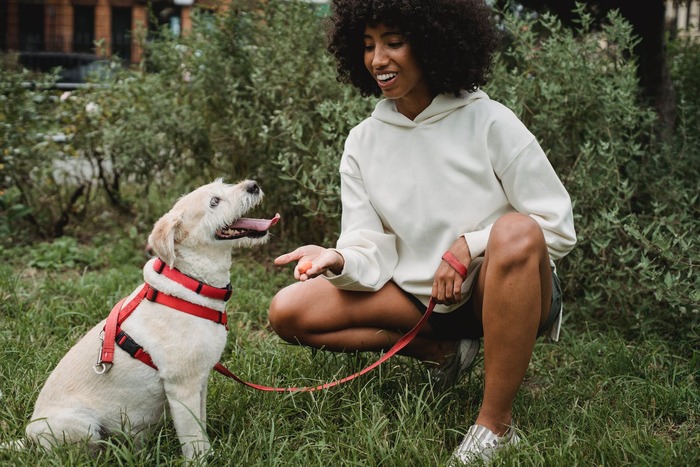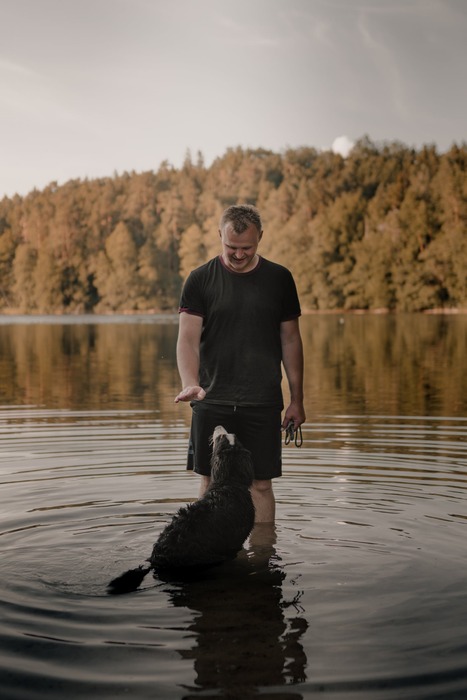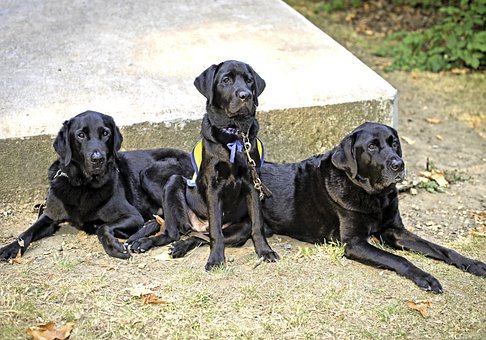2022-11-29
The path toward turning a dog into a service dog is usually paved with a lot of challenges and requires determination, consistency, time, and money. Unfortunately, it can be prohibitively expensive to get a trained service dog, or it may take too long to get one from a non-profit organization/charity. That is why many people have started searching for alternative ways to get a loyal companion by their side. Training your own service dog provides a totally new experience to owners by teaching them how to be responsible, patient, and understanding.
Service animals are dogs, who have been individually trained to do specific work for the benefit of a person with a physical and/or mental disability. They can not be other species, except for miniature horses, who are accepted in some US states. Service dogs must be well-mannered, obedient, calm, friendly and properly behave while in public. In order for a dog to become a service dog, he/she needs to go through both basic obedience training and specialized service dog training.

Are Service Animals Emotional Support Animals?
No, there are two main differences between both types of animals:
1. Service dogs perform specific tasks, while emotional support animals provide comfort and companionship only;
2. Service animals can be dogs only, while emotional support animals can be all types of domesticated species.
Prior to moving to train your pup, you should make sure that he/she has the right temperament to become a service dog. Service dogs are friendly, loving, trainable, and calm. If your dog is too anxious, shows signs of aggression, does not tolerate physical contact, or is not really people-oriented, but rather self-sufficient, he/she may not have the right type of temperament for service dog work. Mild behavioral issues can always occur and many of them are usually caused by certain triggers in the environment, a traumatic experience in the past, or just a lack of socialization. Having said that, you should keep in mind, many issues can be addressed with proper training and socialization.
However, just like humans, dogs are individuals with their own character and personality. Some of them are the right fit for the “job”, while others-not, or at least will require much more practice and commitment.
You should always take your dog’s physical features, such as size, and breed-related characteristics into account, before you take the decision to train him/her as a service animal. If you need your pup to perform physical tasks, such as helping you keep balance or pulling a wheelchair, you should opt for a large dog breed. Mental/emotional tasks can be performed by both small and large dog breeds. Breed-related features such as level of shedding, drooling, and tendencies to bark are also important, so you can determine whether the dog will suit your lifestyle.
As a general rule, puppies, younger than 8 weeks should not be separated from their mother. The age of 10 years is deemed a retirement age for service dogs.
Once you determine what dog breed you are looking for or whether the pup you already have has the right personality to become a service dog, you should start with the basics, namely socialization and basic obedience.
The process of socializing your dog starts at the moment you bring him/her home. You, your family members, as well as any other pets you may have, are the first individuals your pup will have contact with. You have the responsible task to teach him/her how to interact with the world in a good manner and know where his/her boundaries are. Creating a safe and loving environment, and providing him/her with toys and cuddly items will help your pup adapt quicker to his/her new home. Be patient during the process of house training and socializing, as your pup is still learning. Behavioral issues common for pups, such as chewing, jumping, and whining, when left alone, can be outgrown. However, you should watch your pup closely to address in a timely manner issues your paw friend seems to be prone to. Otherwise, they will worsen in the future, and you will have to deal with bad habits.
Even if you wish to show your pup the world and start socializing him/her with people and animals, you should wait until he/she is fully vaccinated. Of course, you can always pick him/her up and bring him/her to see the garden/backyard or place him/her in a crate with a good view and take him/her for an improvised walk in the neighborhood.
Once your pup is ready to go outside, you should be careful and pay attention to the interactions between your pup and the other members of society. Try to meet him/her with well-mannered and vaccinated dogs, so he/she can pick up on their social cues.

Basic obedience training ensures that your dog knows how to behave in places open for use to the general public. Basic commands like “sit”, “stay”, “come”, and calmly walking on a leash are the first steps towards more advanced training. You should gradually introduce the leash and the collar to your paw friend and start practicing the fundamentals at home by gradually adding distractions and making the tasks a bit more difficult. Try to understand your dog’s potential, as well as strengths and weaknesses, to adapt the training to him/her as an individual.
Focus training is of great importance to service animals, as they are typically exposed to a lot of distractions and should be able to ignore these. “Watch me” and “look at me” commands should be included in every future service dog’s training program.
The specific service dog tasks that the dog will perform, depend on the individual’s disability and what their needs are. In general, these can be:
Mobility/Balance-related tasks, Retrieve tasks, Alert tasks, Guide tasks, Psychiatric tasks, Hearing tasks, and tasks related to interaction with other people.
All the tasks listed above can be divided into various specific tasks, so they serve the person’s needs the most, i.e. service dogs can be trained to pull a wheelchair, help their owner to keep balance, physically protect them with their body from falling down and hurting themselves, guide them to a safe place, interrupt repetitive behaviors, bring various items such as medication, phone, beverages...etc., dial 911, open/close doors, turn on/off the lights, alert for oncoming episodes (seizures, decreasing blood sugar, migraine, cardiac episode...etc.), perform Deep Pressure Therapy, tactile stimulation, respond to certain sounds such as fire alarms/doorbells/phone ringing/, notify a family member/passersby that the owner needs help...etc…

Based on your location, you may or may not be allowed by law to train your own service dog. Countries like the US and the UK provide owners with more freedom in regard to this matter and allow them to train a service dog themselves. The rules in other countries are more restrictive, and you may need to go through professional training with a member of a recognized organization like ADI or IGDF or with an accredited local school.
Wearing identification gear in the US and the UK is not mandatory for service animals (known as assistance animals in the UK). Also, there is no official service dog registry. By “official” we mean approved by the government. However, you should always check your local laws to make sure that your service animal meets the requirements to be recognized in your area.